Geckos are reptiles belonging to the infraorder Gekkota. There exist nearly 1,500 different gecko species worldwide distributed across every continent except Antarctica. Geckos range in size from the 14-inch long New Caledonian giant gecko to the tiny Jaragua gecko that measures just 16 millimeters long. They make popular pets due to their vivid colors, interesting behaviors, and habit of making vocalizations. Today, we’ll discuss 10 incredible gecko facts that will teach you everything you want to know about these fascinating lizards.
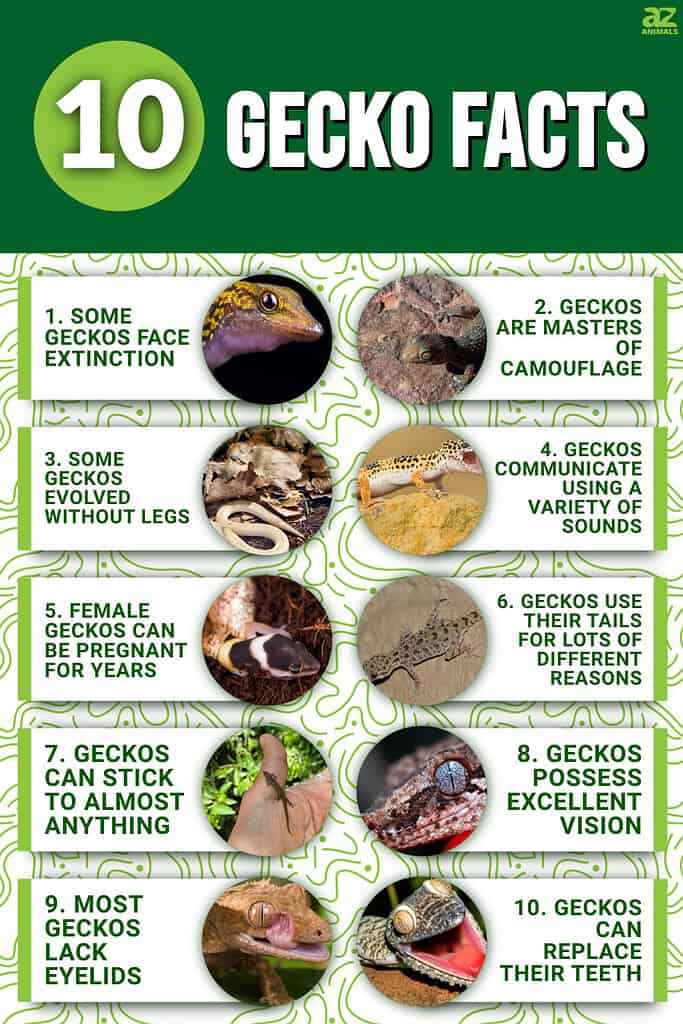
10. Geckos Can Replace Their Teeth

Geckos can possess hundreds of tiny teeth.
©Artush/Shutterstock.com
When a person loses a tooth it’s a big deal, as once an adult tooth is lost it’s lost forever. Diphyodont is the term used for animals that only get two successive sets of teeth like humans. On the opposite end of the spectrum are polyphyodonts, or animals that can replace their teeth continuously.
Different gecko species possess different amounts of teeth. Generally speaking, geckos have somewhere between 50 and 300 teeth, with an average of around 100 teeth. Geckos will replace their teeth every 3 to 4 months, with new teeth growing right behind the old ones. They will continue to replace teeth throughout their lives, so as long as a gecko is alive it will always grow new teeth.
9. Most Geckos Lack Eyelids
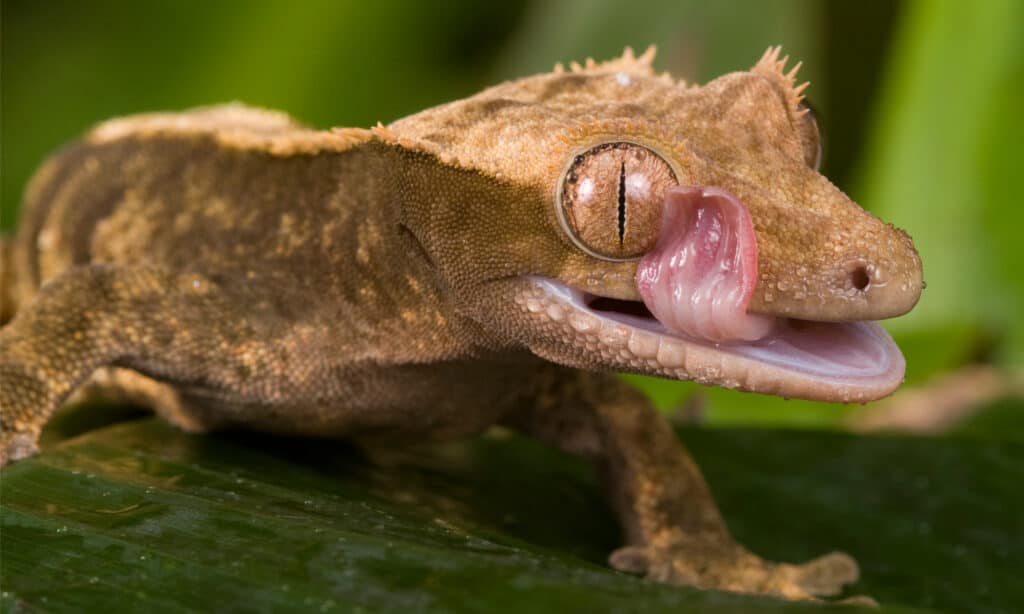
Gargoyle geckos lick their eyes to keep them moist since they don’t have eyelids.
©iStock.com/Stuartb
The eyelid is a small but important part of the body for most animals. Its purpose is to protect the eye and prevent foreign bodies from getting into the eye. While this sounds like an essential feature, you’d be surprised to learn that not all animals evolved eyelids.
For example, all geckos except those in the family Eublepharidae lack eyelids. That said, this does not mean that their eyes get by without any protection. A thin membrane covers the outer surface of the eye. To keep dust and other debris out of their eyes, geckos without eyelids frequently lick their eyes. You’ve likely seen this unusual behavior before, and now you know why!
8. Geckos Possess Excellent Vision

Geckos have incredible vision.
©iStock.com/Rafael Cutó
Due to their cold-blooded nature, the majority of reptiles are diurnal, including most lizards. However, unlike most lizards, geckos are typically nocturnal. As a result, they possess excellent night vision and can see colors exceptionally well, even in low light. In fact, their color vision is almost 350 times more sensitive than human eyes.
To function in low light, geckos evolved a high number of large cone cells. They also have a multifocal optical system, which allows them to see objects in sharp detail at two different depths at the same time. Geckos possess an innate ability to correct blurred images by sorting and collecting unfocused colors.
7. Geckos Can Stick to Almost Anything
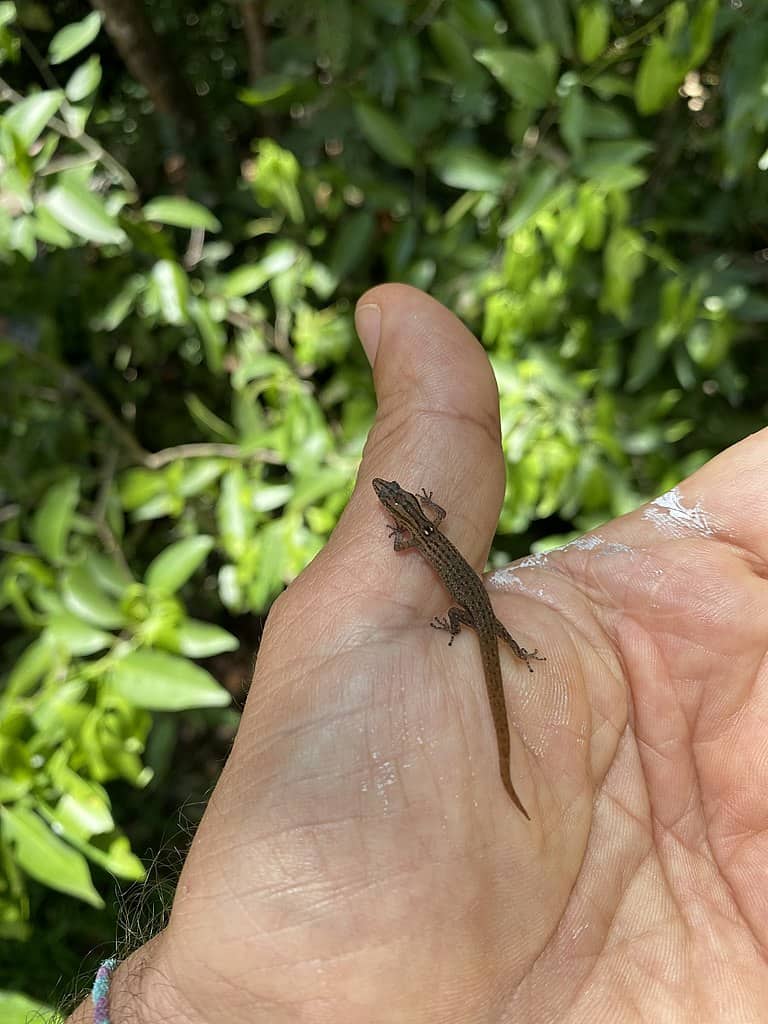
Geckos can stick to just about anything.
©John William Bailly / Creative Commons – License
The phrase “sticky fingers” usually applies to someone with a penchant for taking things that don’t belong to them. In the case of geckos, the phrase is apt given their uncanny ability to stick to practically anything. Around 60% of gecko species possess adhesive toepads that allow them to stick to surfaces even without liquid or surface tension.
Tiny setae or bristles line the bottom of geckos’ feet. These setae help to keep the feet clear of dirt and debris, which improves the connection between a gecko’s feet and the surface to which it adheres. While many researchers long-believed that the setae were the reason for geckos’ sticky feet, new evidence suggests that geckos actually rely on electrostatic interaction to adhere to objects. While their adhesion powers are incredible, they struggle to stick to Teflon, likely due to its low surface energy.
6. Geckos Use Their Tails for Lots of Different Reasons

Geckos store fat in their tails that they use for energy during lean times.
©Carl Drews / Creative Commons – License
Autotomy, or self-amputation, is a behavioral adaptation that allows an animal to purposely detach a body part. This is typically done to protect the animal from predators, either by escaping the predator’s clutches or to distract it long enough for the animal to get away. Like many lizards, geckos possess this ability, and can also regrow their tails within a matter of weeks.
In addition to using their tails for defense, geckos also rely on their tails for sustenance during lean times. Geckos store fat in their tails as an emergency source of food when other food is less readily available. A fat tail means a gecko has had plenty to eat lately, while a thin tail is a possible sign that a gecko may be malnourished.
5. Female Geckos Can Be Pregnant for Years
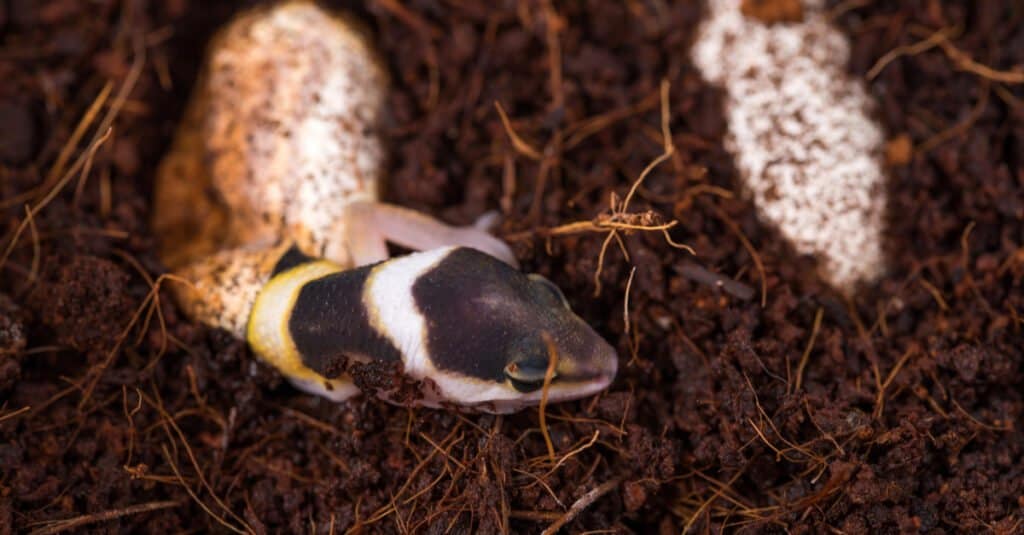
Female geckos are usually pregnant for just a few weeks but some gestate their eggs for several years.
©Spok83/Shutterstock.com
Some gecko facts seem too crazy to believe, but this next one is 100% true. Like other reptiles, female geckos primarily lay eggs instead of giving birth to live offspring. Typically, once a female gecko copulates, she will lay her eggs within several weeks. For example, a female leopard gecko only gestates her eggs for around 3 or 4 weeks, which is one of the shortest pregnancies of any gecko.
On the other end of the spectrum as far as pregnancy is concerned is the harlequin gecko. Amazingly, harlequin gecko females can be pregnant for anywhere from 3 to 4 years. That makes their pregnancy one of the longest of any creature in the animal kingdom.
4. Geckos Communicate Using a Variety of Sounds

Geckos produce a number of unique vocalizations including clicks, chirps, and barks.
©Milan Zygmunt/Shutterstock.com
There are nearly 5,000 different species of lizard worldwide. Although many of these species hiss, they make very few other vocalizations. In fact, most lizards rarely if ever vocalize. Geckos serve as the exception to this rule, as geckos produce a variety of sounds to communicate different messages.
Geckos make a wide variety of different sounds running from chirps to barks and clicks. To this day, researchers aren’t entirely certain what these different sounds mean or why they’re used. Geckos may vocalize to mark the boundaries of their territory and ward off other geckos or to avoid confrontations. Alternatively, they may be used to attract mates. The truth is no one really knows.
3. Some Geckos Evolved Without Legs
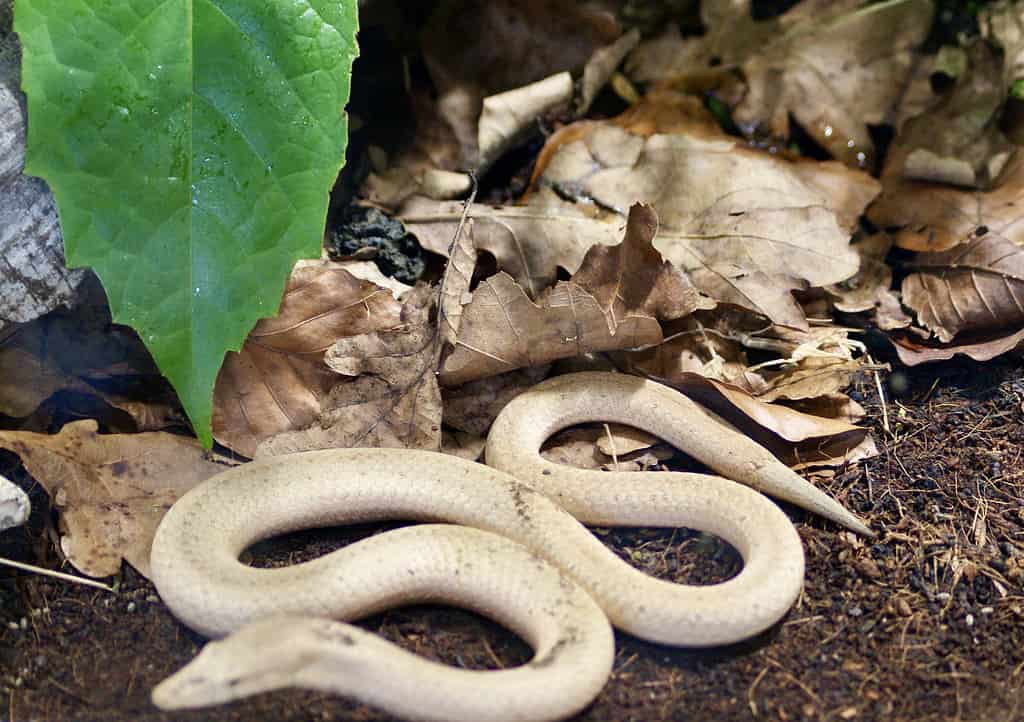
The Lialis jicari (Papua snake lizard) is a type of legless gecko that moves by slithering like a snake.
©NasserHalaweh / CC BY-SA 4.0 – License
When people think of geckos, they tend to think of small, cute four-legged lizards with bright eyes and dazzling colors. What most people don’t think of are legless creatures that resemble snakes. However, the truth of the matter is that not all geckos are cut from the same cloth.
Some geckos evolved a means of transportation that does not rely on legs. For example, the slithering gecko Lialis jicari does not have any legs. To move, it wriggles its body back and forth like a snake. It evolved tiny nubs on its chin and a series of ripples along the stomach. These ripples likely aid the gecko in its movement by reducing friction.
2. Geckos Are Masters of Camouflage
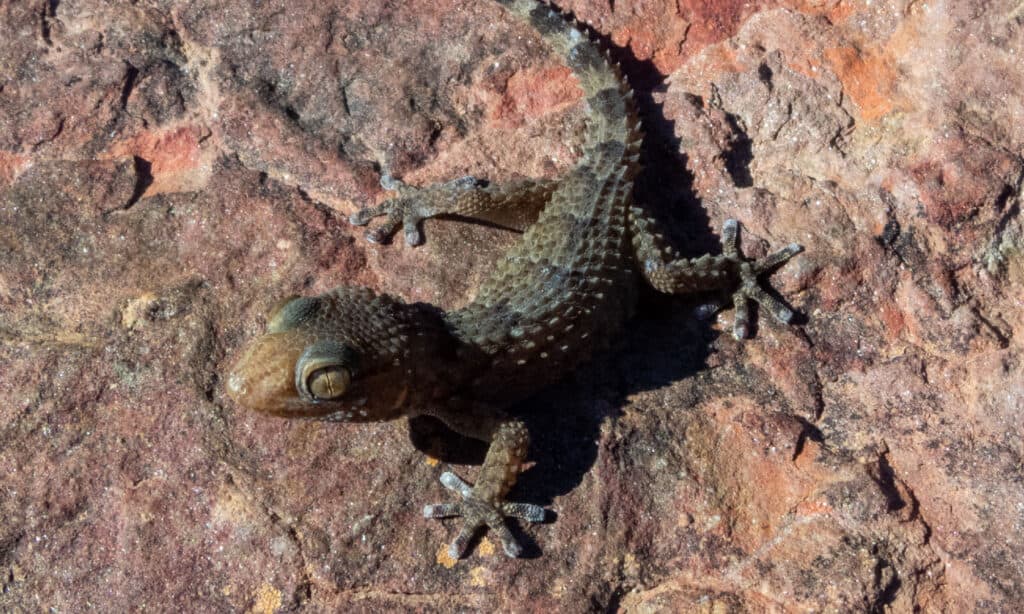
The Bibron’s thick-toed gecko can easily hide from its natural predators with some clever camouflage.
©iStock.com/Willem Van Zyl
Many animals rely on camouflage to help them catch prey and avoid predators. While some use their natural color to blend in with their environment, others can change their color at will. Geckos utilize both methods to great effect, making them some of the best camouflage artists out of all lizards.
For example, the stump-toed gecko can change its color from very dark to very light depending on its surroundings. Meanwhile, Moorish geckos don’t rely on their eyes to tell them about the color of their environment. Instead, they use their skin to detect the area around them and make adjustments using light-sensitive proteins to camouflage themselves. Others, such as the Wybera leaf-tailed gecko or satanic leaf-tailed gecko, naturally appear as if they are a mossy rock or leaf, respectively.
1. Some Geckos Face Extinction

The psychedelic rock gecko is one of several endangered gecko species.
©reptiles4all/Shutterstock.com
Geckos are extremely diverse, with nearly 1,500 known species worldwide. That said, not all species are particularly populous or widespread. Some, such as the leopard gecko, enjoy popularity in the pet trade and face little-to-no risk of going extinct, at least currently. On the flip side, some species are endangered and on the brink of extinction.
The IUCN lists a number of different gecko species as Critically Endangered. For example, the Gulbaru gecko is native to Australia and found only in a small strip of land in northeastern Australia, measuring a few square kilometers. Meanwhile, the psychedelic rock gecko used to be one of the most popular species in the pet trade due to its vivid colors. Found only on two tiny Vietnamese islands, few specimens remain in the wild due to the pet trade, habitat loss, and predation.
The photo featured at the top of this post is © iStock.com/J Esteban Berrio
Thank you for reading! Have some feedback for us? Contact the AZ Animals editorial team.






